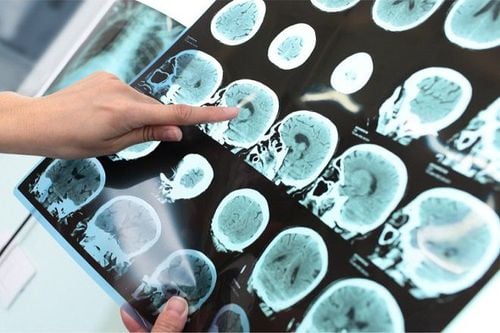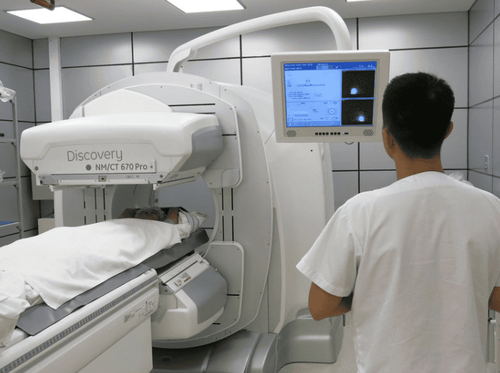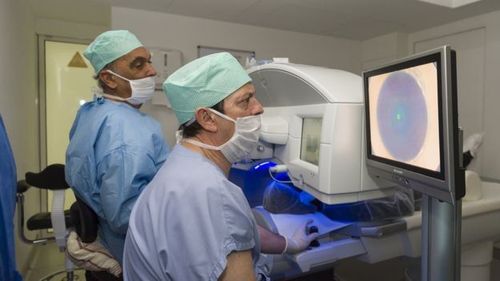This is an automatically translated article.
Posted by Master, Doctor Dinh Van Thuyet - Department of Diagnostic Imaging and Nuclear Medicine - Vinmec Times City International General HospitalPET/CT is one of the most modern nuclear medicine techniques available today, can diagnose diseases at the cellular and molecular levels, so this method has very high accuracy. PET/CT is most commonly used in cancer for early diagnosis and monitoring and assessment of treatment response. In addition, PET/CT is also used in the diagnosis of some cardiovascular and neurological diseases...
1. What is a PET/CT scan?
PET/CT is a very small dose of radioactive material used to detect lesions with abnormally high glucose metabolism. Therefore, PET/CT can provide information about organ dysfunction very early compared to other imaging modalities.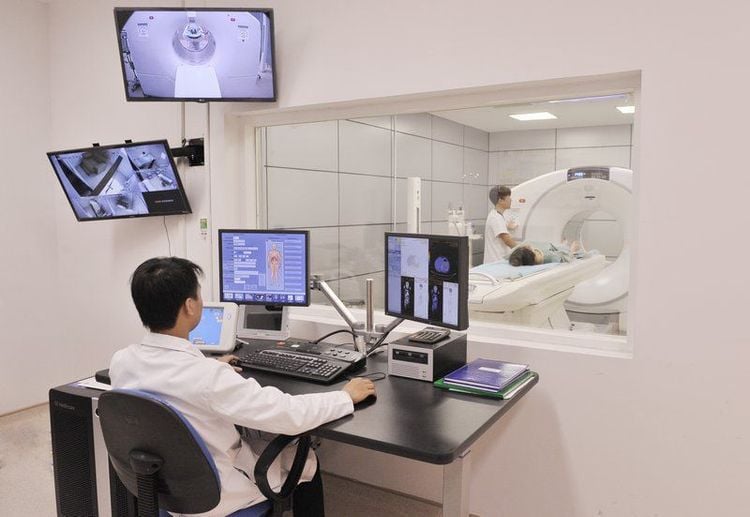
Hệ thống máy PET/CT GE Discovery MIDR với CT 128 dãy của Hoa Kỳ tại Vinmec
2. What is PET CT scan for?
PET/CT is often prescribed by doctors in the following cases:Early detection of cancerous lesions: Unlike benign tumors, cancerous tumors often increase sugar metabolism. As a result, PET/CT can help detect lesions and pathologies at a very early stage, even when they are not detected on CT, MRI, etc. PET/CT can detect about 80% of the disease. types of cancer due to increased activity with glucose that is common in cancer cells. Evaluation of the stage of cancer: PET/CT has the ability to assess quite accurately what stage the cancer is at? soon or late. As a result, clinicians can make appropriate treatment regimens according to international guidelines based on the actual stage of the disease. Re-evaluate the stage of the disease: some advanced cancers cannot be operated immediately, the clinician will treat the patient with chemotherapy and/or radiation first. After this course of treatment, the patient will be assigned a PET/CT scan to re-evaluate the stage of the disease. Quite a few patients in this group have a good response to treatment so they would be candidates for radical surgical treatment. PET/CT plays a huge role in deciding whether a patient is eligible for radical surgery. Monitoring response to treatment: Thanks to PET/CT, doctors can assess the effectiveness of the regimen that patients are being treated early, so that they can make a decision to continue maintaining it or change it soon. regimens to optimize treatment effectiveness. According to studies, PET/CT has contributed to changing the treatment strategy of more than one third of cancer diseases in the world. Over 90% of cancer patients get the right treatment decisions after PET/CT. Evaluation of recurrence, metastasis: PET/CT is an excellent and almost the only tool in terms of imaging to assess whether a patient has metastasis or local recurrence. This is an important requirement that is mandatory in the management and monitoring of cancer patients.
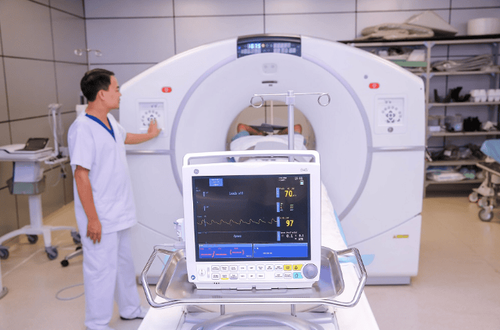
Chụp PET/CT an toàn và còn có thể áp dụng cho cả trẻ em





